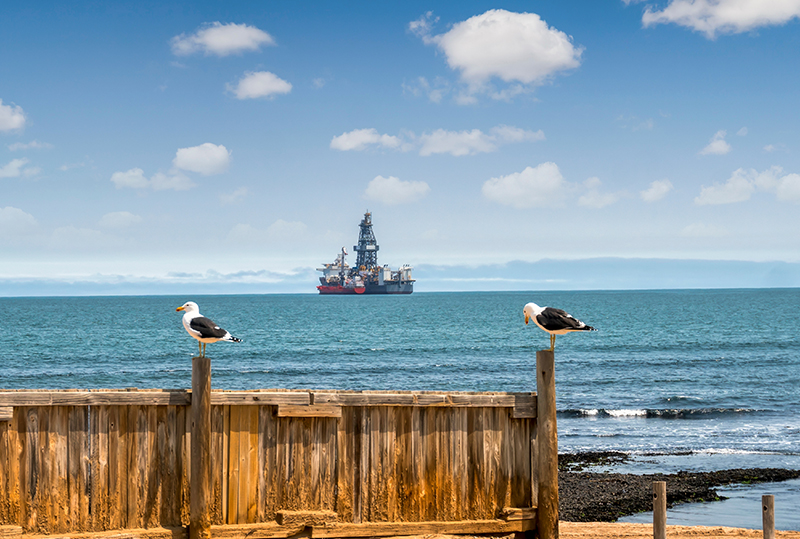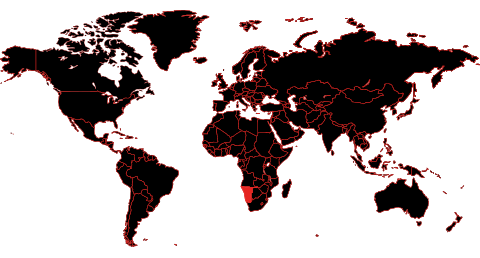Balancing Oil Wealth and Environmental Sustainability: Namibia’s Dual Energy Strategy
The Dilemma of Oil Wealth and Environmental Responsibility
Namibia is on the brink of an energy transformation. With significant oil discoveries in the Orange Basin and promising onshore potential in the Owambo Basin, the country is set to become a major player in Africa’s oil and gas industry.
However, this opportunity comes with a critical challenge—balancing economic growth from oil wealth with environmental sustainability and climate commitments. As the world moves toward decarbonization and renewable energy, Namibia faces a complex question:
Can Namibia harness its oil wealth without compromising its environmental integrity?
This isn’t just about economics or environmental policy. It’s about defining Namibia’s energy identity and ensuring a sustainable and prosperous future.
Oil Wealth and Green Energy Leadership
Namibia’s dual energy strategy is rooted in economic diversification and energy independence. On one hand, the country’s offshore and onshore oil discoveries promise significant economic benefits:
• Increased GDP Growth – Offshore developments could double Namibia’s GDP growth to 8% per year within the next decade.
• Revenue Generation – Oil exports are projected to generate billions in government revenue, funding infrastructure, education, and healthcare.
• Job Creation and Industrial Growth – Exploration, production, and related industries are expected to create thousands of jobs and stimulate local economies.
On the other hand, Namibia is uniquely positioned to become a leader in renewable energy. The country’s geographic features provide exceptional potential for:
• Solar Power – Namibia has some of the world’s highest solar irradiation levels, ideal for large-scale solar power generation.
• Wind Energy – Coastal regions have strong, consistent winds, making them suitable for wind farm development.
• Green Hydrogen Production – With abundant renewable resources, Namibia is investing in green hydrogen projects, positioning itself as a future exporter of hydrogen-based energy.
Namibia’s dual strategy isn’t about choosing between oil and renewables—it’s about leveraging oil wealth to fund the transition to a sustainable, low-carbon economy.
Environmental Challenges and Climate Commitments
As Namibia expands its oil exploration and production, it faces significant environmental challenges:
• Carbon Emissions and Climate Impact – Increased oil production will raise Namibia’s carbon footprint, conflicting with global climate targets.
• Ecosystem Disruption – Offshore drilling, particularly in the Orange Basin, poses risks to marine ecosystems and biodiversity.
• Water Usage and Pollution – Onshore exploration, such as in the Owambo Basin, requires significant water resources and raises pollution risks.
Namibia is a signatory to the Paris Agreement and has committed to reducing carbon emissions. This puts pressure on the government and the energy industry to balance economic growth with environmental stewardship.
To address these challenges, Namibia must:
• Implement Strict Environmental Regulations – Ensure that oil companies comply with international environmental standards and best practices.
• Adopt Carbon Mitigation Strategies – Invest in carbon capture and storage (CCS) technologies to offset emissions.
• Strengthen Environmental Monitoring – Establish an independent regulatory body to monitor environmental impacts and enforce compliance.
This strategic approach allows Namibia to capitalize on its oil wealth while maintaining its environmental commitments.
Leveraging Oil Wealth for Renewable Energy Transition
Namibia’s long-term energy strategy is about using finite oil resources to build a renewable energy future. This involves:
A. Funding Renewable Energy Projects
Oil revenues provide the financial capital needed to invest in large-scale renewable projects. Namibia is already developing:
• The Omburu Solar Power Station – A utility-scale solar project contributing to Namibia’s renewable energy grid.
• Green Hydrogen Projects – Namibia aims to become a global supplier of green hydrogen, exporting to Europe and Asia.
• Wind Energy Investments – Planned wind farms along the coast will increase Namibia’s renewable energy capacity.
By strategically channeling oil revenues into renewable infrastructure, Namibia is building a diversified and sustainable energy economy.
B. Building Energy Security and Export Potential
Namibia’s dual energy strategy is about energy security and export diversification. By developing both oil and renewable resources, Namibia can:
• Reduce Dependency on Imported Energy – Increasing domestic production for local consumption and industrial use.
• Export Energy to Regional and Global Markets – Becoming a reliable supplier of both oil and renewable energy.
• Establish Green Hydrogen Export Corridors – Positioning itself as a strategic partner in global energy transition networks.
This approach strengthens Namibia’s geopolitical influence and ensures long-term economic resilience.
Strategic Implications for Policy and Investment
To achieve a successful dual energy strategy, Namibia must:
• Align Policy with Long-Term Goals – Develop a comprehensive energy policy that supports both oil production and renewable energy investments.
• Attract Strategic Investments – Position Namibia as an attractive investment destination for both oil majors and renewable energy companies.
• Public-Private Partnerships – Foster partnerships between government, international investors, and local businesses to accelerate energy projects.
• Technology Transfer and Capacity Building – Invest in technical education and skills development to create a workforce capable of supporting a diversified energy industry.
These strategic initiatives will maximize economic benefits while ensuring environmental sustainability and social equity.
A Blueprint for a Sustainable Energy Future
Namibia’s dual energy strategy isn’t just about economic growth—it’s about creating a sustainable, inclusive, and resilient energy economy.
By balancing oil wealth with renewable energy investments, Namibia is:
• Building a diversified and competitive energy sector.
• Reducing carbon emissions while supporting global energy transition goals.
• Enhancing national energy security and economic independence.
This balanced approach ensures that oil wealth is not just a short-term gain but a long-term investment in Namibia’s future prosperity.
Namibia is proving that it’s possible to harness natural resources responsibly, lead in renewable energy innovation, and build a sustainable energy economy.
This isn’t just about oil or renewables—it’s about leading Africa’s energy future.
View source version on
• Ministry of Mines and Energy Namibia (2024) – “Namibia’s Energy Policy and Climate Commitments”
• The Namibian (2024) – “Namibia Balances Oil Wealth and Renewable Investments”
• International Energy Agency (2024) – “Africa’s Energy Transition: A Strategic Perspective”
Earth Day 2025 – Our Power, Our Planet
“Our Power, Our Planet” — the theme of Earth Day 2025 — is not just a rallying cry for envir
Positioning Namibia’s Youth at the Center of Its Energy Future
Namibia stands at a pivotal moment in its national development, faced simultaneously with a signific
Five Skills You Need as a Student Before Graduating
Empowering Namibia’s Youth for Tomorrow’s Economy Namibia faces a persistent challenge of high y




